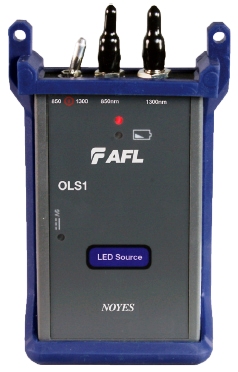
|
|
The Noyes OLS1 LED light source series is a cost-effective, rugged, handheld instrument designed for performing insertion loss measurements on fiber optic links when used with an optical power meter. The LED output is stabilized to ensure accurate test results per current TIA/EIA requirements. The OLS1 is easy to operate with only a [Wavelength/ Power] switch, which selects optical wavelengths or disables unit. The OLS1 operates over 60 hours from a typical 9V alkaline battery. An AC adapter is optional for extended use. Features. Rugged, handheld, lightweight. 850 and 1300 nm LED (multimode) light sources (660 nm available). Certify 50 µm or 62.5µ multimode fiber links for any 850 or 1300 nm application, including Gigabit Ethernet (GBE) per TIA/EIA standards.
|